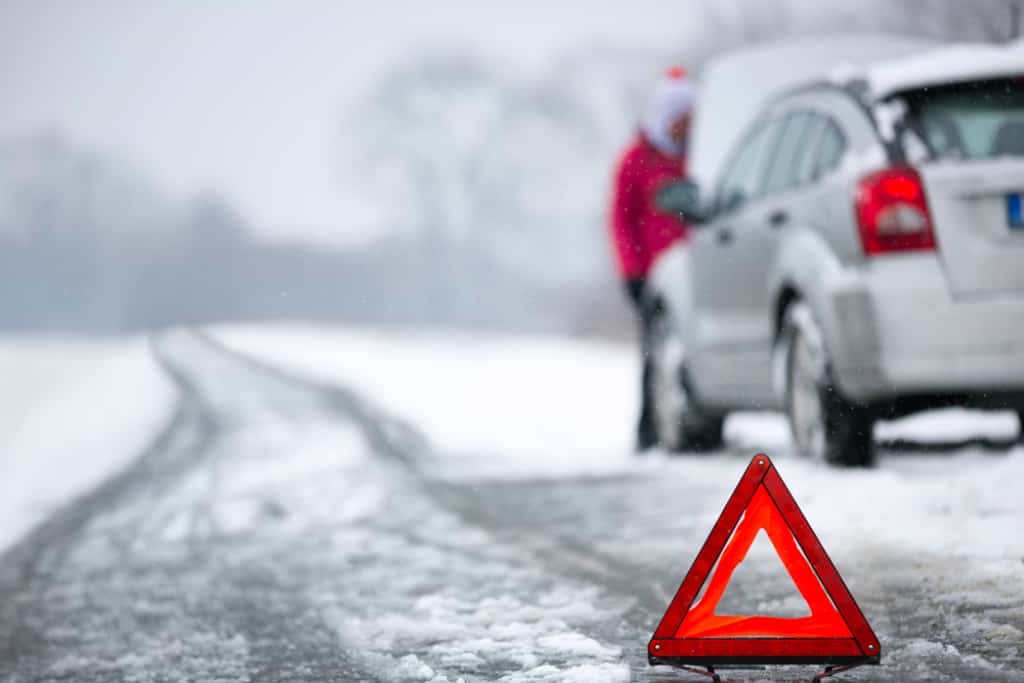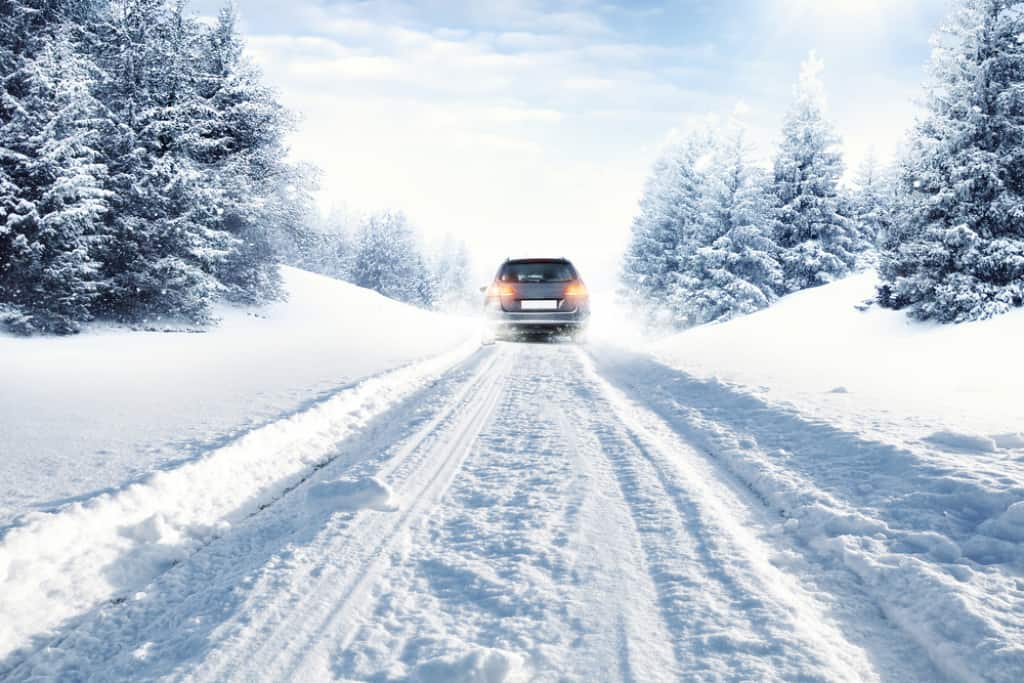Winter checklist
Battery
Batteries account for 80% of breakdowns all year round. And in winter weather, the risk of battery failure is even higher. Cold weather slows battery performance down. Plus, you’re likely to use your lights and heater more in winter – adding even more strain to the battery.
Lights
Thanks to the dark winter nights (and days), you’ll probably rely on your lights more in winter. So they need to work well. Replace any fused or dim bulbs and clean the light casing.
Make sure you check all exterior lights – headlamps, brake lights, and indicators etc.
Coolant
Top up the engine coolant with anti-freeze. Engine coolant should be a 50/50 mix of water and anti-freeze – but drivers often top up with just water throughout the year.
Too little anti-freeze – especially in cold weather – can cause the engine to overheat. That could lead to engine failure, and an expensive repair bill.
Tyres
Your tyres can have a huge impact on how safe your car is – especially in winter.
A good tread is crucial to keeping a good grip on the road surface. The minimum tread required by law is 1.6mm. But in winter, a minimum tread of 3mm can give a better – and safer – grip. You should also make sure you have the correct tyre pressure.
Depending on where you live/the weather, it could be worth investing in winter tyres.
Wipers and screenwash
In winter, roads take a beating from dirt, grit, salt, rain, and snow – and so does your car.
Always make sure your wiper blades are in good condition. Run your finger down the edge to check for any nicks and bumps. If there are, don’t worry – wipers are easy to replace.
Clean your windscreen and top up screenwash before every journey. You could even add some anti-freeze if it’s particularly cold. This is a good time to make sure there aren’t any chips, too. The winter weather can make them even worse.
Get the car serviced
One of the easiest ways to make sure your car is ready for winter? Get it serviced.
A mechanic will make sure the car is safe and ready for the trickier driving conditions. They’ll top up any crucial fluids and replace components if needed. Plus, a service covers checks that most drivers can’t do themselves – checking brake pads and fluid, for example.
Carry a winter breakdown kit
No matter how long your journey is, you should keep a winter breakdown kit in your car. Even if you aren’t far from home, you could be stuck for a long time waiting for a recovery van.
What to include:
- A warning triangle
- A shovel or spade
- A torch
- A jump lead
- A tow rope
- De-icer and a scraper
- A high-visibility jacket
- A fully-charged mobile phone – and a portable charger, if possible
- Food and drink – ideally, a hot drink in a flask
- You could throw a spare coat and wellies in the boot, too

Winter driving tips
So you’ve done all the winter checks and prepped your car for the worst possible weather. But even the safest cars could be caught out in the snow…
1. Plan your route
Check the weather before you set off and find the safest route. Stick to main roads where possible – these usually have more traffic, so are more likely to be gritted. Always allow more time than you usually would for your journey, too.
2. Make sure you have at least a quarter tank of fuel
Fuel efficiency is usually worse in cold winter weather. Fill your tank by at least a quarter before each journey – even if your car would make it at other times of the year.
3. Make sure you have comprehensive breakdown cover
The last thing you want is to get stranded in the snow or rain. If you don’t have breakdown cover, now’s the time to get it.
4. Use common sense – don’t drive if it’s not safe
If you don’t feel comfortable driving in bad weather, don’t. Most journeys don’t need to be made right away; you can always rearrange or avoid trips altogether.






